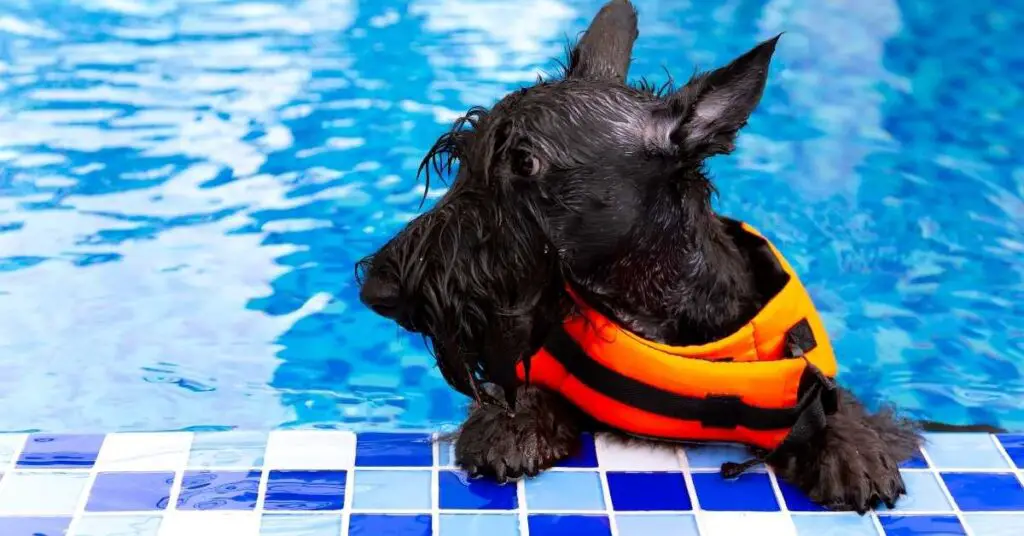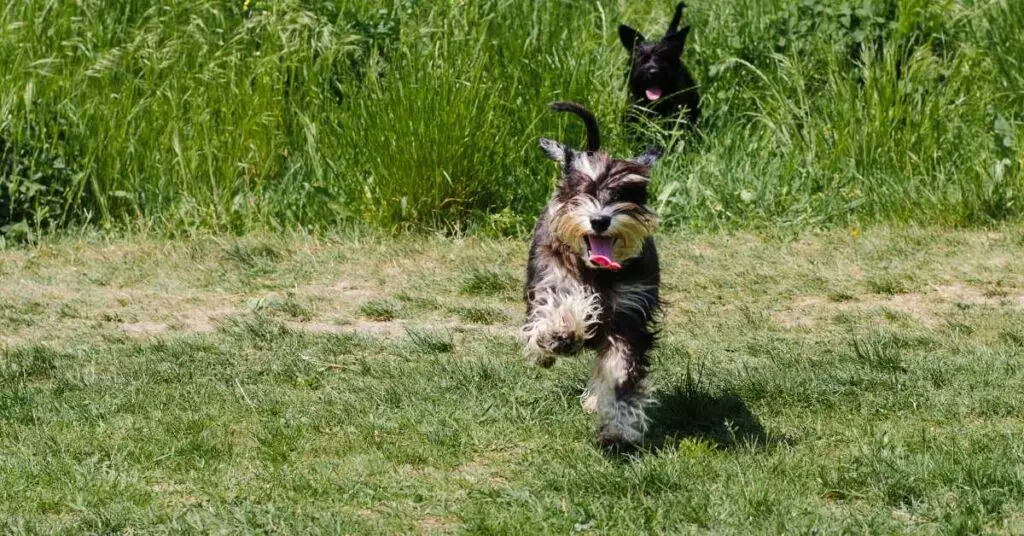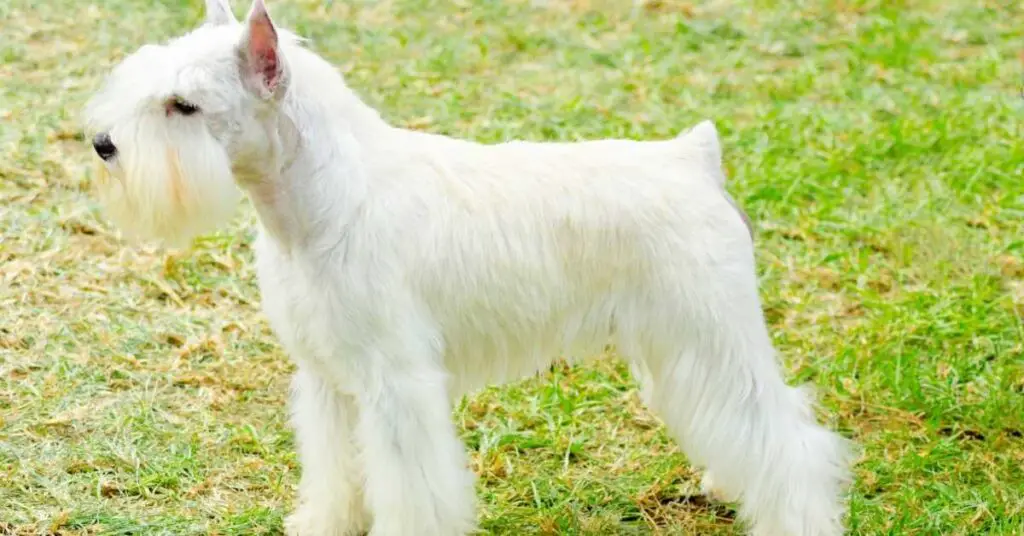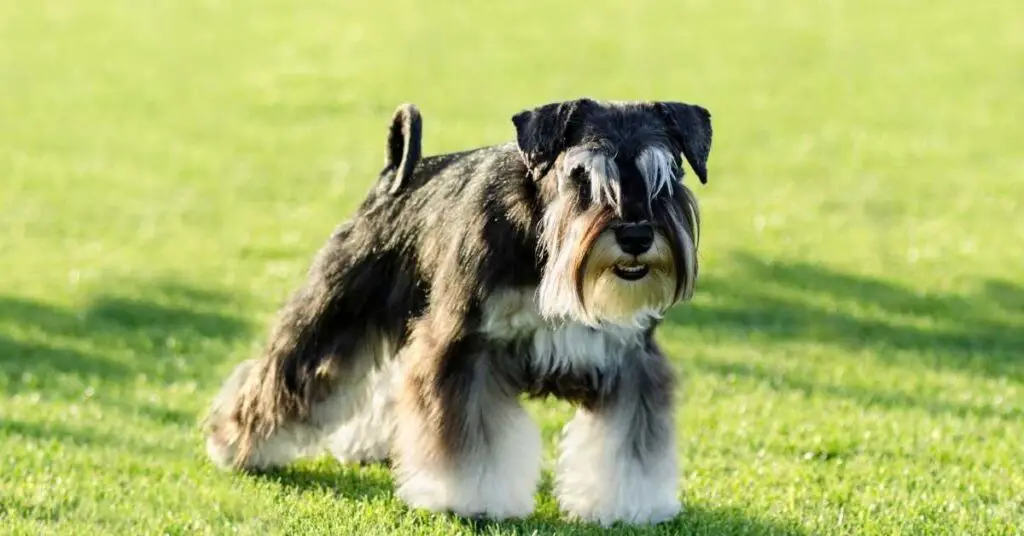Are you ready to uncover the enigma of the rarest Schnauzer color? Prepare to be captivated by the fascinating world of Schnauzer coat genetics. These furry companions come in a variety of striking colors, each with its own allure and charm.
While black, salt and pepper, black and silver, phantom, and even blue Schnauzers are well-known and cherished, there is one color that stands out from the rest – a true rarity among this beloved breed.
Delve into the realm of Schnauzer coat genetics as we explore the stunning and uncommon variations that exist. From the timeless favorites to the dramatic and distinctive looks, we will leave no stone unturned.
Get ready to uncover the secret of the rarest Schnauzer color, a hue that will leave you astounded and longing to belong to this exclusive club of Schnauzer enthusiasts.
Key Takeaways
- The rarest Schnauzer color is black and silver.
- Schnauzer coat genetics determine fur color, resulting in a wide range of colors.
- Liver and tan is a rare variation of black and silver.
- White Schnauzers have a unique coat color and require regular grooming.
Understanding Schnauzer Coat Genetics
You can understand schnauzer coat genetics by visualizing how different colors are passed down from generation to generation. Schnauzer coat genetics involve inheritance patterns and mutations that determine the color of their fur. The coat color of a schnauzer is determined by the genes inherited from both parents. Different combinations of these genes can result in a wide range of colors, including black, salt and pepper, and white.
It’s important to note that coat color can also influence a schnauzer’s health and temperament. For example, certain coat colors may be associated with an increased risk of certain health conditions, while others may be linked to specific temperamental traits.
Understanding schnauzer coat genetics can provide valuable insights into the breed and help breeders make informed decisions to maintain the health and well-being of these beloved dogs.

The Standard Colors of Schnauzers
The most common shades found in Schnauzers are as ordinary as a cloudy day. The understanding of coat genetics plays a vital role in determining the colors that are prevalent in this breed.
According to scientific evidence, the standard colors of Schnauzers are black, salt and pepper, and black and silver. These colors are inherited through a combination of dominant and recessive genes, with the dominant gene for black being the most common.
However, when it comes to the rarest Schnauzer color, it is important to note that there are variations within each standard color. For example, a rare variation of the black and silver color is the liver and tan, which is a result of a recessive gene.
Understanding these coat genetics can help breeders and enthusiasts appreciate the diversity and uniqueness of Schnauzers’ colors.
Black Schnauzers: Common but Classic
Black Schnauzers, though common, exude a timeless and elegant charm. These majestic creatures are not only a delight to the eyes but also possess a rich history. Understanding coat genetics is crucial to comprehend the prevalence of black Schnauzers.
The gene responsible for black coat color is dominant, making it more likely for black Schnauzers to be born. This classic hue showcases the breed’s distinctive features, such as their wiry and dense fur.
To delve deeper into the topic, here are five fascinating facts about black Schnauzers:
- Black Schnauzers have a dark pigmentation that adds depth and allure to their appearance.
- Their coat color remains consistent throughout their lifetime, preserving their timeless beauty.
- Black Schnauzers are often seen as symbols of sophistication and class.
- This color variation is widely recognized and celebrated in the Schnauzer community.
- Despite being a common color, black Schnauzers possess a unique allure that sets them apart from the rest.
By appreciating the elegance and significance of black Schnauzers, one can truly embrace the essence of this remarkable breed.
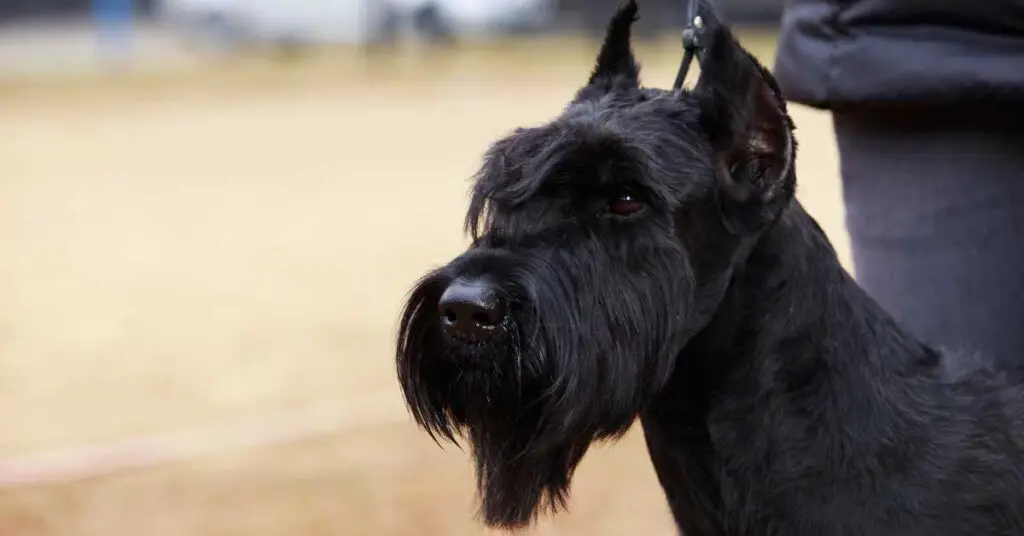
Salt and Pepper Schnauzers: A Timeless Favorite
Salt and pepper Schnauzers have a distinctive and enduring appeal that captures the hearts of dog lovers worldwide. Understanding schnauzer coat genetics helps explain the unique coloring of these dogs.
The salt and pepper pattern is achieved through a combination of black and white hairs, creating a beautiful blend of colors. This coloration is a result of the interaction between the genes responsible for black and white coat colors.
While black Schnauzers are more common, the salt and pepper variation is considered rarer. This rarity adds to the appeal of salt and pepper Schnauzers, as people often desire a dog that stands out from the crowd.
The timeless and classic look of salt and pepper Schnauzers continues to make them a favorite among dog enthusiasts, providing a sense of belonging to those who appreciate their beauty.
Black and Silver Schnauzers: A Unique Combination
With their striking combination of dark and silver hues, black and silver Schnauzers exude an air of unparalleled elegance and sophistication. These unique color variations are the result of understanding coat genetics and the standard colors of Schnauzers.
While black and silver Schnauzers may not be as common as their salt and pepper counterparts, they are highly sought after for their distinctive appearance. The black and silver coloring is determined by specific genes that control the distribution of pigments in the coat. The black color is dominant, while the silver color is a dilution of the black pigment. This combination creates a stunning contrast that sets black and silver Schnauzers apart from other colors.
As a result, owning a black and silver Schnauzer can provide a sense of belonging to an exclusive group of dog owners who appreciate the rarity and beauty of this unique coloration.
White Schnauzers: Uncommon and Striking
White Schnauzers, with their pristine and snowy coats, possess a captivating and ethereal beauty that sets them apart from other members of the Schnauzer family. While not the rarest color, white Schnauzers are certainly uncommon and striking.
These beautiful dogs have a fascinating breed history and origin. The white color in Schnauzers is a result of a recessive gene, which makes it less common than other colors such as black or salt and pepper. White Schnauzers were originally bred in Germany and were recognized as a separate color variation in the late 20th century.
Grooming white Schnauzers requires careful attention to maintain their stunning appearance. Regular bathing and brushing are essential to keep their coats clean and prevent matting. Additionally, using specialized whitening shampoos can help enhance the brightness of their white fur.
With proper care, white Schnauzers can continue to amaze and stand out in any crowd.
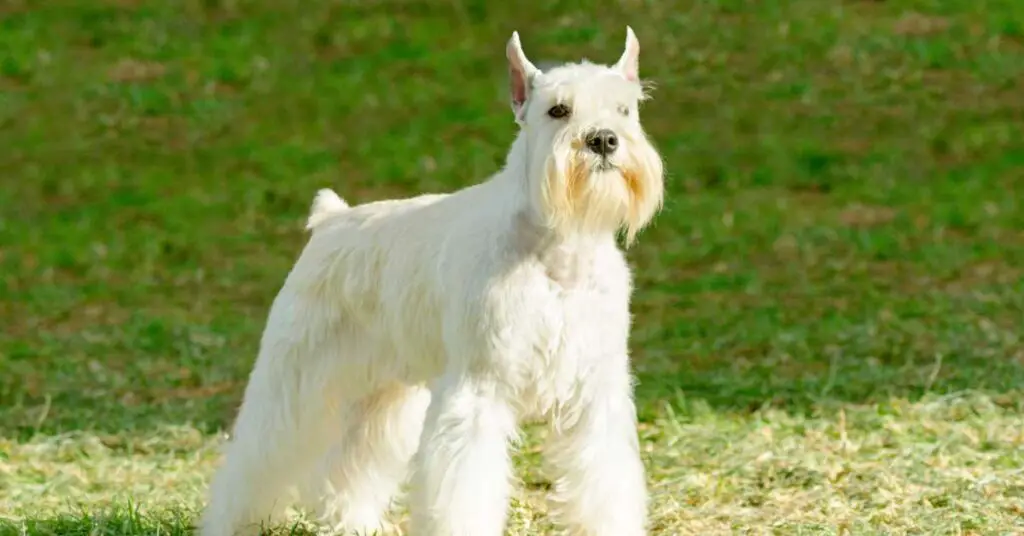
Liver Schnauzers: A Rare and Rich Color
Imagine owning a dog with a coat as rare and rich as a Liver Schnauzer. These striking creatures have a unique coloration that sets them apart from other Schnauzer varieties.
However, it’s important to be aware of some health concerns that are more prevalent in Liver Schnauzers. One such concern is the increased risk of copper storage disease, a condition that affects the liver’s ability to process copper. Regular monitoring of liver function and a carefully balanced diet can help manage this risk.
Despite these concerns, the popularity of Liver Schnauzers is on the rise, as more and more people appreciate their distinctive appearance and charming personalities. By owning a Liver Schnauzer, you become part of an exclusive club, creating a sense of belonging among fellow enthusiasts.
Parti Schnauzers: The Unique and Eye-Catching Pattern
Parti Schnauzers sport a captivating coat pattern that is sure to turn heads. These unique dogs have a base color of white with patches of black or liver throughout their coat. Breeding for this distinctive pattern can be a challenge due to the genetic factors involved.
It requires careful selection of parents with the desired coat colors and patterns. When grooming a Parti Schnauzer, it’s important to pay special attention to their coat. Regular brushing is necessary to prevent matting and to keep their fur looking its best. Additionally, frequent trips to the groomer are recommended to maintain their unique appearance.
Parti Schnauzers are a rare and sought-after color variation, making them a beloved choice for those looking for a dog that stands out from the crowd.
Phantom Schnauzers: A Dramatic and Distinctive Look
Get ready to be amazed by the dramatic and distinctive look of Phantom Schnauzers! These unique dogs have coat patterns that are sure to turn heads.
Phantom Schnauzers have a base color that’s usually black or silver, with clearly defined markings in a lighter shade, like tan or silver. The markings are seen on specific areas of the body, including the eyebrows, cheeks, legs, and chest. These striking patterns give the dogs a truly eye-catching appearance.
The dramatic coat patterns of Phantom Schnauzers are the result of genetic factors. The genes responsible for these patterns aren’t fully understood, but it’s believed that they involve the interaction of multiple genes. This complexity adds to the rarity of Phantom Schnauzers, making them a sought-after breed for those who desire a dog with a distinctive look.
Owning a Phantom Schnauzer can give you a sense of belonging to an exclusive group of dog owners who appreciate the beauty and uniqueness of these stunning dogs.
Blue Schnauzers: The Unusual and Rare Color
Now that we’ve explored the dramatic and distinctive look of Phantom Schnauzers, let’s dive into another rare color variation in Schnauzers: Blue Schnauzers. Blue Schnauzers have a unique and unusual coat color that sets them apart from other Schnauzers. This fascinating color is the result of specific genetic factors that affect the production of pigment in the hair follicles.
While Blue Schnauzers are certainly eye-catching, it’s important to consider their health concerns. Some Blue Schnauzers may be prone to certain genetic disorders, such as skin conditions and allergies. Therefore, it’s crucial for potential owners to be aware of these potential health issues and provide proper care and attention to their Blue Schnauzers.
Despite these concerns, if you’re looking for a Schnauzer with a rare and captivating color, a Blue Schnauzer might be the perfect addition to your family.
Merle Schnauzers: A Stunning and Uncommon Variation
If you’re considering adding a new addition to your family, you might be intrigued by the stunning and uncommon variation of Merle Schnauzers. They make up less than 10% of the Schnauzer population. Merle Schnauzers have a unique coat pattern characterized by patches of diluted pigmentation, giving them a marbled or mottled appearance. This striking coloration is a result of specific merle schnauzer genetics.
Unlike other coat colors, the merle gene is not a standard trait in Schnauzers and requires specific breeding for its expression. In terms of temperament, Merle Schnauzers are known to be intelligent, loyal, and affectionate, making them excellent family pets. However, it’s important to note that the merle gene is associated with potential health issues, such as deafness and vision impairments.
Therefore, it’s crucial for breeders and owners to prioritize responsible breeding practices and regular health screenings for these stunning and rare Schnauzers.

The Rarest Schnauzer Color Revealed
Discover the exquisite and elusive shade that’ll captivate you in the world of Schnauzer coat colors. When it comes to the rarest Schnauzer colors, there’s one that stands out from the rest.
The rarest Schnauzer color is the black and silver combination. This unique color is a result of genetics and various factors that influence Schnauzer coat color.
Genetics play a crucial role in determining the color of a Schnauzer’s coat. The black and silver color is a result of a specific gene combination that produces a striking contrast between black and silver hairs. This combination is quite rare and not commonly seen in Schnauzers.
Other factors, such as breeding and lineage, can also influence the rarity of the black and silver color. Breeders who specialize in producing this color often carefully select parent dogs with the desired genetic traits to achieve the desired coat color in their offspring.
If you’re looking for a Schnauzer with a coat color that’s truly unique and rare, the black and silver combination is the one that’ll make you stand out in the crowd.
Frequently Asked Questions
Are there any health concerns associated with rare schnauzer colors?
Genetic risks and health concerns can be associated with rare schnauzer colors due to breeding practices. Following breeding guidelines and working with reputable breeders can help mitigate these risks and ensure the health of your schnauzer.
Can the rarity of a schnauzer’s color affect its price?
Yes, the rarity of a schnauzer’s color can impact its price. However, ethical breeders prioritize health and temperament over color. Rare colors can arise from genetic mutations, but breeding programs should focus on maintaining the breed’s overall well-being.
How do rare schnauzer colors occur genetically?
Rare schnauzer colors occur due to genetic mutations and inheritance patterns. These mutations can result in unique coat colors that are not commonly seen. Understanding the genetics behind these colors can help breeders produce rare colors intentionally.
Are there any breed standards or guidelines for rare schnauzer colors?
Breed standards set guidelines for ethical breeding practices, ensuring the preservation of desirable traits. However, rare schnauzer colors are not recognized by these standards. Ethical breeders prioritize the health and temperament of the dogs.
Do rare schnauzer colors have any impact on the dog’s temperament or behavior?
The rare colors of schnauzers, resulting from genetic mutations, have no proven impact on a dog’s temperament or behavior. Instead, their significance lies in their potential impact on breeding programs and the fascination they generate among enthusiasts seeking unique and rare variations.
Conclusion
In conclusion, when it comes to Schnauzer colors, the rarest of them all is the magnificent Merle. With its stunning and uncommon variation, this color is sure to turn heads wherever it goes.
While Black, Salt and Pepper, Black and Silver, Phantom, and Blue Schnauzers are all beautiful in their own right, the Merle Schnauzer stands out as a true rarity.
So, if you’re looking for a unique and eye-catching companion, look no further than the mesmerizing Merle Schnauzer. You won’t be disappointed!

